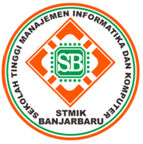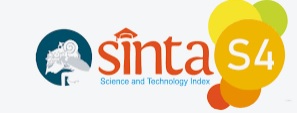Peningkatan Urgensi Daerah Rawan Bencana melalui Analisis Geoparsing pada Berita Kebencanaan dengan Text Mining
Abstract
This research aims to enhance the Disaster Vulnerability Map through the utilization of Geoparsing method by Text Mining on disaster news reports. The increase in casualties and damages caused by natural disasters reported by BNPB from 2020 to 2021 necessitates effective disaster management and preparedness for future events. BPBD Jawa Tengah employs disaster news reports as a means to raise public awareness. However, the creation of an accurate Disaster Vulnerability Map requires geospatial data on the frequency of disaster occurrences, which is not available within the reports. Thus, Geoparsing is employed to process the disaster reports data. The findings of this study demonstrate that Geoparsing can enhance the accuracy of the Disaster Vulnerability Map and provide insights into the level of urgency for disaster preparedness in the Preparedness Disaster Management phase.
Keywords: Text Mining; Geoparsing; Disaster Prone Area; Disaster Management
Â
Abstrak
Penelitian ini bertujuan untuk meningkatkan Peta Rawan Bencana melalui penggunaan metode Geoparsing yang didapat melalui Text Mining pada berita laporan kebencanaan. Dalam kurun waktu tahun 2020 hingga 2021, terjadi peningkatan korban dan kerugian akibat bencana alam yang dilaporkan oleh BNPB. Oleh karena itu, penanganan dan persiapan yang efektif diperlukan untuk mengurangi dampak bencana di masa depan. BPBD Jawa Tengah menggunakan berita laporan kebencanaan sebagai upaya untuk meningkatkan kesadaran masyarakat. Namun, untuk menghasilkan Peta Rawan Bencana yang akurat, diperlukan data geospasial mengenai frekuensi kejadian bencana yang tidak tersedia dalam laporan tersebut. Dalam penelitian ini, dilakukan pengolahan data laporan kebencanaan menggunakan metode Geoparsing. Hasil penelitian menunjukkan bahwa Geoparsing dapat meningkatkan akurasi Peta Rawan Bencana dan memberikan informasi mengenai tingkat urgensi persiapan terhadap bencana di fase Preparedness Disaster Management.
Kata kunci: Text Mining; Geoparsing; Disaster Prone Area; Disaster Management
References
A. Usman, “Integrated disaster risk management in Indian environment: Prediction, prevention and preparedness,†GHTC 2017 - IEEE Glob. Humanit. Technol. Conf. Proc., vol. 2017-January, pp. 1–6, 2017.
J. Widagdo, D. D. Putra, B. Syihabuddin, T. Juhana, E. Mulyana, and A. Munir, “Android-based Disaster Management Application for After-Disaster Rapid Mobile Assessment,†IoTaIS 2020 - Proc. 2020 IEEE Int. Conf. Internet Things Intell. Syst., pp. 201–204, 2021.
T. Pujadi and W. Sardjono, “Evaluation of Knowledge Management System for Disaster Management Using Factor Analysis,†Proc. 2018 Int. Conf. Inf. Manag. Technol. ICIMTech 2018, no. September, pp. 327–332, 2018.
V. Nunavath and M. Goodwin, “The Role of Artificial Intelligence in Social Media Big data Analytics for Disaster Management -Initial Results of a Systematic Literature Review,†2018 5th Int. Conf. Inf. Commun. Technol. Disaster Manag. ICT-DM 2018, no. 1, pp. 1–4, 2019.
F. A. Bazley, A. Maybhate, C. S. Tan, N. V. Thakor, C. Kerr, and A. H. All, “Enhancement of bilateral cortical somatosensory evoked potentials to intact forelimb stimulation following thoracic contusion spinal cord injury in rats,†IEEE Trans. Neural Syst. Rehabil. Eng., vol. 22, no. 5, pp. 953–964, 2014.
S. Raffel and S. Stephens, “Extended Abstract: How Hurricane Visualization Tools Affect the Public’s Perception of Risk and Preparedness,†IEEE Int. Prof. Commun. Conf., vol. 2020-July, pp. 186–187, 2020.
T. D. Scheneid and L. Collins, Disaster Management adn Preparedness. CRC Press, 2000.
National Research Council, National Research Council. Improving disaster management: the role of IT in mitigation, preparedness, response, and recovery. 2007.
L. Gigović, D. PamuÄar, Z. Bajić, and S. Drobnjak, “Application of GIS-interval rough AHP methodology for flood hazard mapping in Urban areas,†Water (Switzerland), vol. 9, no. 6, pp. 1–26, 2017.
H. Mojaddadi, B. Pradhan, H. Nampak, N. Ahmad, and A. H. bin Ghazali, “Ensemble machine-learning-based geospatial approach for flood risk assessment using multi-sensor remote-sensing data and GIS,†Geomatics, Nat. Hazards Risk, 2017.
I. C. Nicu, “Tracking natural and anthropic risks from historical maps as a tool for cultural heritage assessment: A case study,†Environ. Earth Sci., vol. 76, no. 9, p. 330 2017.
C. J. Rupp, P. Rayson, I. Gregory, A. Hardie, A. Joulain, and D. Hartmann, “Dealing with heterogeneous big data when geoparsing historical corpora,†Proc. - 2014 IEEE Int. Conf. Big Data, IEEE Big Data 2014, no. September 2013, pp. 80–83, 2015.
J. de Bruijn, H. de Moel, B. Jongman, J. Wagemaker, and J. Aerts, “TAGGS: Grouping Tweets to Improve Global Geotagging for Disaster Response,†Nat. Hazards Earth Syst. Sci. Discuss., pp. 1–22, 2017.
L. Nizzoli, M. Avvenuti, M. Tesconi, and S. Cresci, “Geo-semantic-parsing: AI-powered geoparsing by traversing semantic knowledge graphs,†Decis. Support Syst., vol. 136, no. March, p. 113346, 2020.
M. S. Rohman, H. A. Santoso, and G. W. Saraswati, “Pemanfaatan Topic-Focused Crawler untuk Pembangunan Corpus Berita Bencana menggunakan Teknik Scrapy CSS Selector,†Semin. Nas. APTIKOM 2019, pp. 250–258, 2019.
J. W. Karl, “Mining location information from life- and earth-sciences studies to facilitate knowledge discovery,†J. Librariansh. Inf. Sci., vol. 51, no. 4, pp. 1007–1021, 2019.
How To Cite This :
Refbacks
- There are currently no refbacks.










